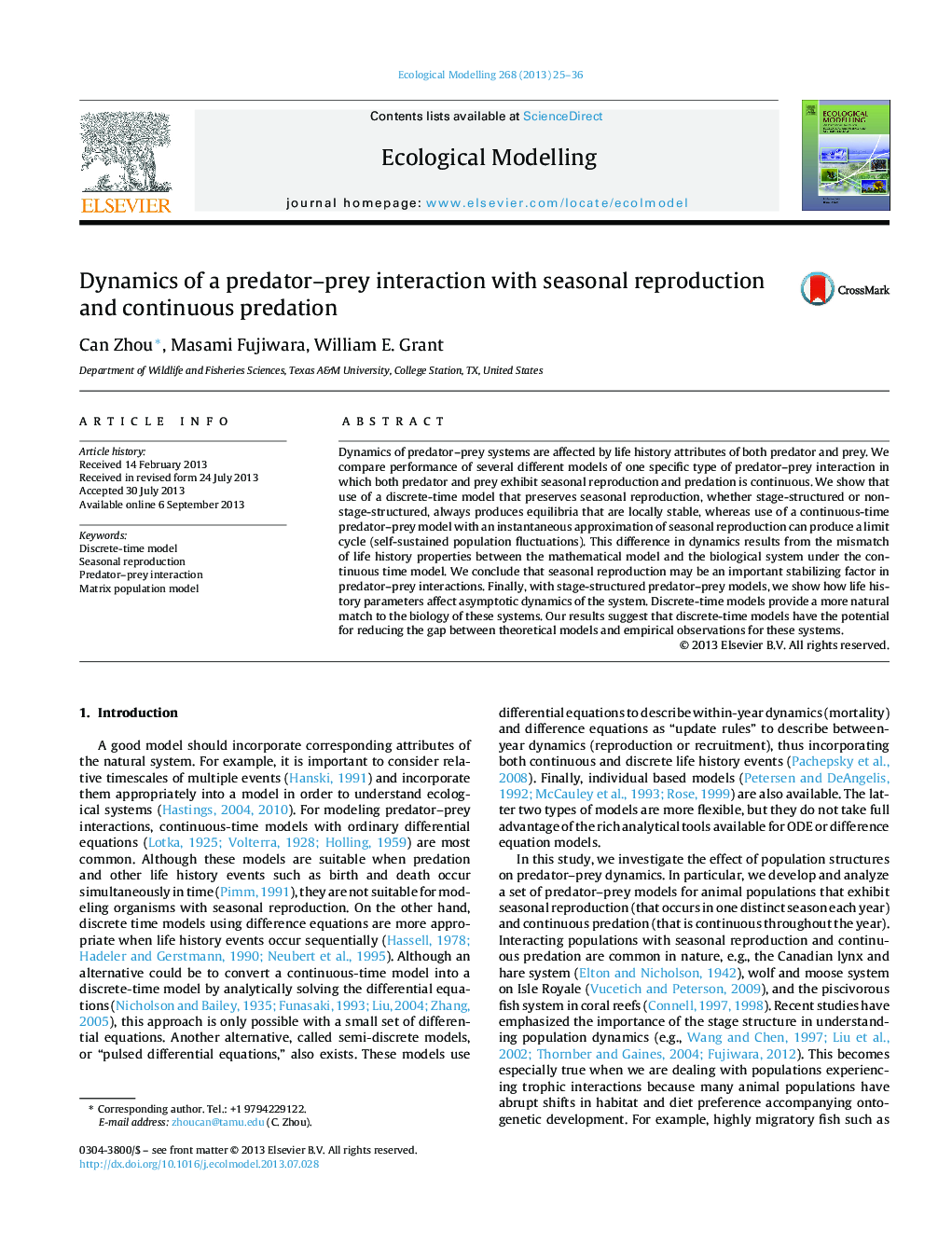| Article ID | Journal | Published Year | Pages | File Type |
|---|---|---|---|---|
| 6297044 | Ecological Modelling | 2013 | 12 Pages |
Abstract
Dynamics of predator-prey systems are affected by life history attributes of both predator and prey. We compare performance of several different models of one specific type of predator-prey interaction in which both predator and prey exhibit seasonal reproduction and predation is continuous. We show that use of a discrete-time model that preserves seasonal reproduction, whether stage-structured or non-stage-structured, always produces equilibria that are locally stable, whereas use of a continuous-time predator-prey model with an instantaneous approximation of seasonal reproduction can produce a limit cycle (self-sustained population fluctuations). This difference in dynamics results from the mismatch of life history properties between the mathematical model and the biological system under the continuous time model. We conclude that seasonal reproduction may be an important stabilizing factor in predator-prey interactions. Finally, with stage-structured predator-prey models, we show how life history parameters affect asymptotic dynamics of the system. Discrete-time models provide a more natural match to the biology of these systems. Our results suggest that discrete-time models have the potential for reducing the gap between theoretical models and empirical observations for these systems.
Related Topics
Life Sciences
Agricultural and Biological Sciences
Ecology, Evolution, Behavior and Systematics
Authors
Can Zhou, Masami Fujiwara, William E. Grant,
